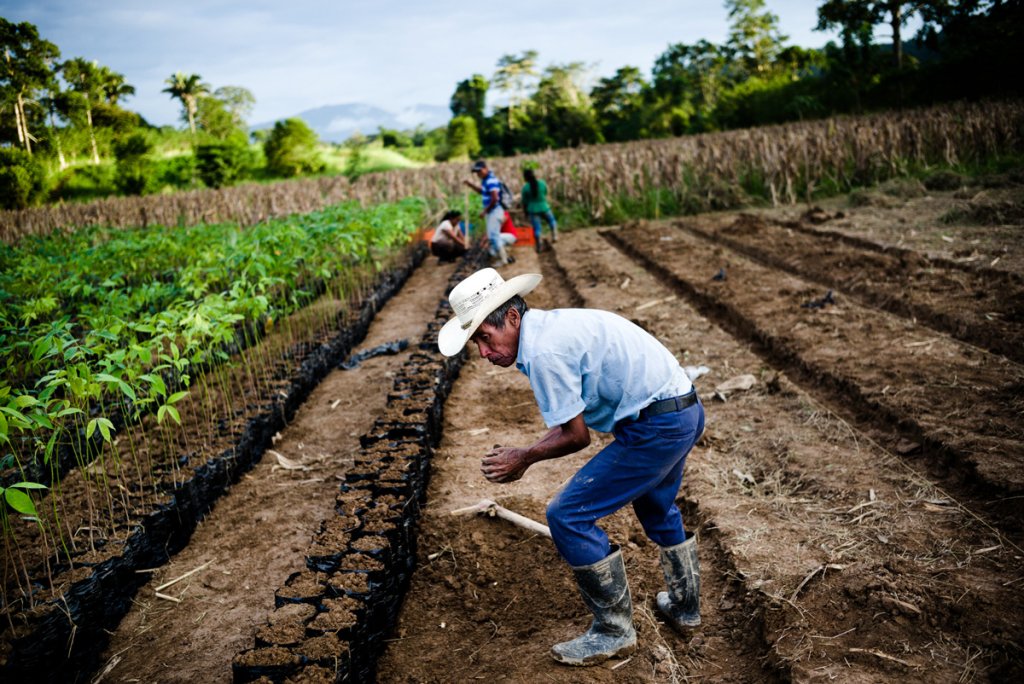Originally posted by the Livelihoods Fund.
Written by Livelihoods Fund with Thomas Hubert, CIFOR.
The Global Landscapes Forum: The Investment Case, held in London on June 10th, drew together the diverse worlds of finance and science. Investment bankers rubbed shoulders with agriculture and forestry researchers, as well as representatives from advocacy groups and government agencies, to create practical solutions to encourage investment in the environment through new innovative models and financial tools.

The Livelihoods Fund for Family Farming (Livelihoods 3F) is an example of one such model based upon the dynamic coalition of actors from both the private and public sector. Launched in February 2015 with Danone and Mars, Inc., Livelihoods 3F is an evergreen investment fund and an open and cooperative platform between companies, public institutions, research organizations, and governments that want to co-invest and learn from large-scale ecosystem restoration and sustainable farming projects that seek to secure better livelihoods for small farmers’ communities and help its partners improve the sustainability of their supply chains.
It operates on the conviction that sustainability-driven projects can be an investment, not just charity. The fund will invest 120 million € over the next 10 years in projects that will deliver high social, environmental and economic benefits to 200,000 farms and 2 million people, while securing a positive financial return and effective tool to sustainably source raw agricultural materials along the supply chain for its investors.

PROVIDING CAPITAL TO SMALLHOLDER FARMERS
Livelihoods’ President Bernard Giraud was invited to present the new fund during the Global Landscapes Forum’s Opening Plenary Session alongside Mark Burrows, Managing Director and Vice Chairman Global Investment Banking at Credit Suisse; Leslie Durschinger, Founder and Managing Director of Terra Global; and Bill Rahill, Director of Environment & Natural Resources Global Practice at the World Bank Group.
All four panelists stressed the need to connect the flows of available capital with the needs of local communities, businesses and governments to achieve sustainable land use in developing countries.
For Mark Burrows, the value of ecosystem services could soon replace government guarantees. “In the environment, the asset doesn’t disappear. It is there forever.” The challenge, he said, is to convince investors of the return of principle because only as recent as 10 years ago, investment in landscapes was perceived as risk by bankers and fund managers.
Just like sovereign states generally re-issue debt regularly to fund themselves, Burrows said sustainable landscapes could ultimately become the collateral for the investment they need. “If we understand, and get the financiers to understand that someone will come in at the end of the 10 or 15 years and be the other person that refinances that dead instrument, you will solve the problem,” he said.
While Bernard Giraud acknowledged the need for financial investment in landscape projects, he also stressed the need for the private sector to bring their expertise and skills alongside capital. He said that through Livelihoods 3F, corporates could evolve from being simply buyers of raw materials based upon quality and price today into experts in sustainable farming tomorrow. “The knowledge is there. The question is how to create the right platforms and financial tools to get corporates to share their knowledge on sourcing with each other.”
Watch the remarks of the Opening Plenary’s Moderator Peter Wheeler, Executive Vice President, The Nature Conservancy. Video credit: CIFOR
NEED TO ACCELERATE INVESTMENTS IN LANDSCAPES
Following the Opening Plenary Session, various breakout sessions were held throughout the day ranging from the design of new financial instruments to risk management to the palm oil industry’s efforts to move away from deforestation.

Yet despite the richness of the exchanges and the wealth of expertise on-site, some participants echoed their frustration that things were not moving faster in this sector. Daniel Gad, a commercial farmer in Ethiopia and active member of the World Farmers Organization, bemoaned that he kept meeting financiers who told him they did not know where to put their capital. “I don’t get it. The projects are there. We shouldn’t even be sitting here talking about it. The amount of projects that are credible, bankable projects, sitting in the area that I’m in!”

Having some of the world’s largest investment banks and agricultural commodities buyers display their commitment to sustainable land use at the Global Landscapes Forum is a welcome first step, but delivering on those pledges is another story.
Yet Livelihoods is confident that with increased innovation in the sector and with the invention of new financial tools and platforms like Livelihoods 3F, change can accelerate.
Already, Livelihoods 3F has secured commitment by two of the world’s largest agro-alimentary companies. Mars, Inc. alone purchases 8 million tons of commodities per year. If its commodities can all be sourced in a sustainable way, imagine the incredible impact this would have on the environment, as well as on the lives of smallholder farmers worldwide.
To learn more about the Livelihoods Fund, please visit www.livelihoods.eu.
MORE ABOUT THE GLOBAL LANDSCAPES FORUM: THE INVESTMENT CASE
For presentations, video interviews and a series of White Papers about landscapes finance please visit archive.globallandscapesforum.org/london.



